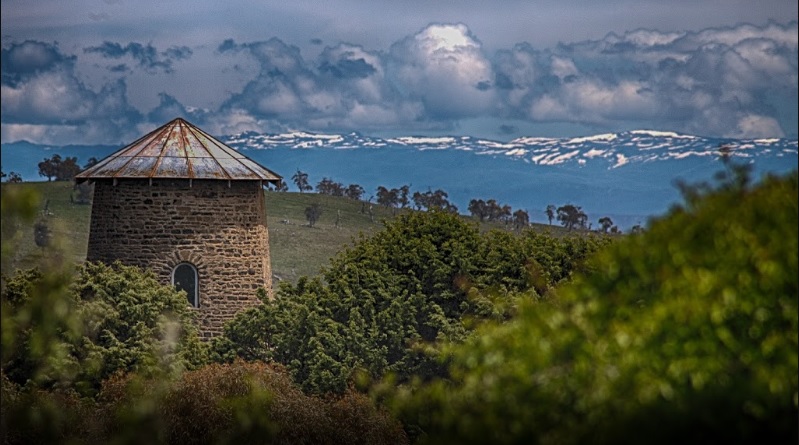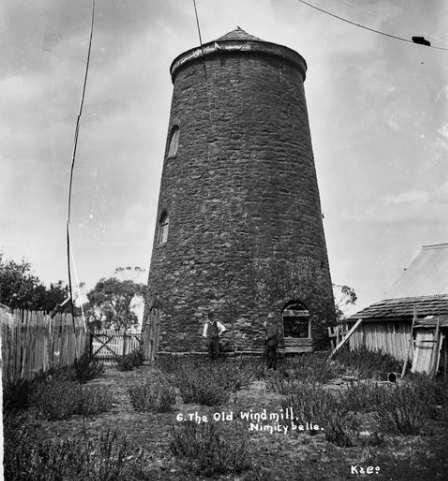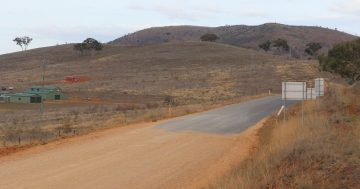
The Old Mill at Nimmitabel has stood for around 150 years. Photo: Peter Quinton.
In a move that had the population of chilly Nimmitabel practically in a sweat, the fate of one of the town’s most prominent structures has hung in the balance while its safety was assessed.
Standing tall among the heirloom buildings the small town is renowned for, the striking Geldmacher Mill was one of only two remaining heritage windmills in NSW.
But public access to the structure was stymied from 1 April when Snowy Monaro Regional Council fenced it off and shuttered it down, citing visible structural defects that potentially made the 150-year-old building unsafe.
But, as a testament to the foundational and restorative works it has undergone over time, the fences recently came down and access restrictions at the site were lifted.
This followed inspections by a structural engineer to determine the extent of the damage.
The windmill tower was built from 1865 to 1872 – in the early years of the Monaro’s settlement – almost singlehandedly by German settler John Geldmacher. Its purpose was to carry sails to power machinery to grind grain into flour.
According to historians, its location close to the main road drew criticism at the time that the moving sails would frighten passing horses, so that left the mill machinery to be powered instead – and ironically – by horses.
Geldmacher’s mill ground flour from 1872 until 1885, when it was unsuccessfully converted to a sawmill.

A photo of the old mill back when Nimmitabell was known as Nimmitybelle. Photo: Powerhouse Museum’s Tyrrell collection.
The mill closed that year, abandoned until the local council restored it in 1961. It represented a historical and cultural record of early construction and manufacturing in the local area.
Always a tourism attraction, in latter years its distinct form proved an Insta blessing alongside “George” the Elephant, the local pub and the sausage rolls at Nimmitabel Bakery.
Located on the corner of Boyd and Clarke Streets, the Old Mill Reserve sits on Crown land but falls under council’s auspices.
Nimmitabel Advancement Group (NAG), for many years, offered valued general care and access coordination at the site.
Fortunately for the mill, the recent safety assessment concluded that the lime mortar degradation affecting the stonework integrity in one section was confined, and the building overall remained intact.
Specialised re-pointing of the mortar in the cracked area will be administered. There will also be changes to the vegetation positioning at the mill’s base to allow easier water drainage.
Council says they will continue to monitor the situation and will seek funding to enable structural restoration and ongoing preservation of the mill – but for now, it’s safe to reopen.
John Geldmacher had a hand in a number of buildings that, to this day, remain cornerstones to the town’s tourism industry.
Yet, as a side note, he remains unnamed in the Monaro Pioneers register.










